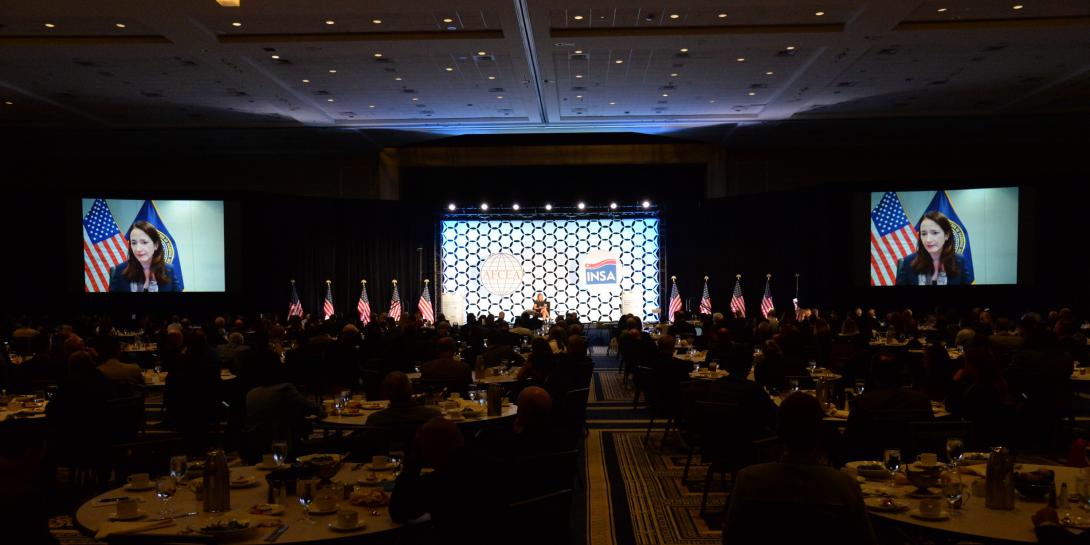Five Thrusts Define U.S. Intelligence Strategy
The U.S. intelligence community sees five priorities as it adjusts to a new era in global security, according to its top official. Avril Haines, director of national intelligence, explained to a luncheon audience that these priorities are all vitally important as the community retools to face new threats in a changing world.
Haines was addressing the opening session of the Intelligence and National Security Summit hosted by AFCEA International and INSA and being held at the Gaylord Convention Center near Washington, D.C., September 13-14. Haines spoke via videoconference to the luncheon keynote, which featured social distancing among the dining tables.
Haines listed the five areas as she moved through her remarks. First and foremost was workforce, as she noted that the intelligence community must compete with the private sector for quality people. Yet, she also maintained that the intelligence community is a good place for people to serve their country in an important role, and that is a good selling point.
There is no greater opportunity to contribute to the national security of the country than in the intelligence community.—Avril Haines, director of national intelligence #IntelSummit21
— Bob Ackerman (@rkackerman) September 13, 2021
“There is no greater opportunity to contribute to the national security of the country than in the intelligence community,” Haines said.
The second point is innovation. The intelligence community must invest in innovative technology, she pointed out. People may question research and development spending, but it is vital for advancement in the community. “Science fundamentally helps you better understand the world,” she declared.
Why invest in science for intelligence? Science fundamentally helps you better understand the world.—Avril Haines, director of national intelligence #IntelSummit21 @ODNIgov
— Bob Ackerman (@rkackerman) September 13, 2021
The third point combined a bit of the first two—investing in expertise for new areas that will affect the future of intelligence. These include digital expertise and environmental knowledge, as these issues will be affecting national security to a growing degree, especially with climate change.
The fourth area is partnerships, and these could be the most important of all. These partners encompass state, local and tribal governments, academia, nonprofit organizations and foreign allies. And industry may be the most vital among them. “Industry is critical to bringing in the technology and expertise we need,” Haines said. “The private sector is an increasingly powerful actor in the global geopolitical arena.”
And safeguarding industry is essential. “We’re not going to be effective in protecting the nation unless we’re protecting the private sector,” she added. This is part of the fifth point: resilience. The community must be able to withstand and reconstitute assets in the face of adversarial action.
The private sector is an increasingly powerful actor in the global geopolitical arena.—Avril Haines, director of national intelligence #IntelSummit21
— Bob Ackerman (@rkackerman) September 13, 2021
These challenges are similar to those confronting other allied intelligence services. “Many intelligence communities around the world are going through similar reflections,” Haines observed.
You can’t go after all the disinformation out there. You have to figure out what is the most important and how do we manage that.—Avril Haines, director of national intelligence #IntelSummit21 @ODNIgov
— Bob Ackerman (@rkackerman) September 13, 2021
And other intelligence agencies are looking toward the commercial realm for solutions as they work with the United States. “Finding ways to bring the private sector and the public sector together is critical,” she declared.



Comments